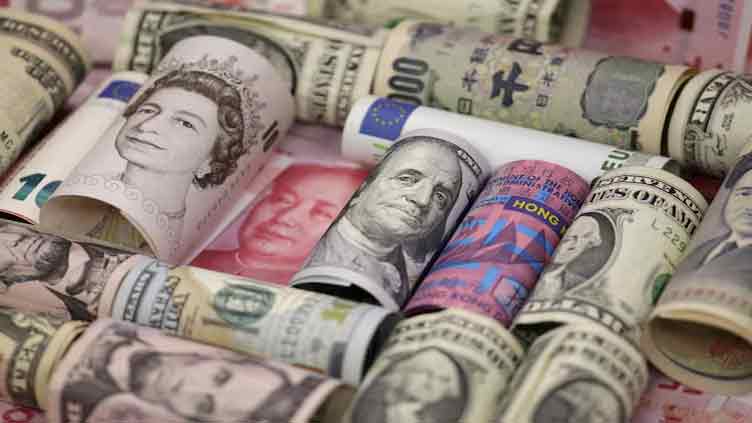The case for forever high interest rates

Business
Huge investment needs and rising interest costs will increase government borrowing
AMSTERDAM (Reuters) - If financial markets are right, interest rates won't just stay high this year, but possibly forever.
The return of inflation means ultra-low rates are history. And markets now reflect a scenario where even the neutral interest rate that balances the economy in the long run after factoring in inflation, dubbed 'R-star', is rising, economists say.
[R-star is the real neutral rate of interest that equilibrates the economy in the long run. Less formally, it is the real interest rate that is neither expansionary nor contractionary when the economy is at full employment.]
Traders see US interest rates at around 4 per cent at the end of the decade, far higher than policymakers' 2.6pc long-run expectations. Euro area rates are seen around 2.5pc, above what has prevailed for most of the bloc's history.
Yet making the right call on where rates settle is a huge challenge for policymakers and investors – many economists reckon R-star is lower than before the great financial crisis, but disagree on how to calculate it, its current level and whether it is rising.
BNY Mellon Investment Management's chief economist, Shamik Dhar, who reckons R-star has risen is "nervous that hasn't been fully priced into equity and property markets."
We explore five factors that will determine interest rates in the longer term:
FOOTING THE BILL
Huge investment needs, whether climate or military, and rising interest costs will keep government borrowing high.
Economists debate the impact of rising debt but some expect spending needs will drive rates up.
Advanced economy budget deficits at 5.6pc of output in 2023 were nearly double 2019's 3pc and will remain elevated at 3.6pc in 2029, the IMF estimates.
Aviva Investors' head of rates Ed Hutchings said higher deficits would raise the premium investors demand to hold government bonds.
But productivity gains have slowed and potential growth is seen subdued on both sides of the Atlantic, factors economists reckon dampen investment.
"That would argue for less of an increase in neutral policy rates," said First Eagle Investment Management portfolio manager Idanna Appio, a former Fed economist.
OLDER
Demographics is one of the biggest uncertainties facing longer-term rates, said BNY Mellon's Dhar, a former Bank of England economist.
There is consensus that a savings glut helped by pre-retirement hoarding in rich countries has depressed rates.
That may continue; 16pc of the world population will be over 65 in 2050, from 10pc in 2022, the United Nations projects. That will likely be most strongly felt in Europe.
But the ratio of dependents, including retirees, to workers is rising. That will cause rates to rise as age-related spending cuts saving, economists Charles Goodhart and Manoj Pradhan argue.
Plugging pension shortfalls through borrowing would also put upward pressure to rates, Nomura said.
HEATING UP
Gauging the economic impact of climate change is another big challenge.
The green transition requires huge investment that could raise rates, says the European Central Bank's Isabel Schnabel, comparing the scale needed to rebuilding Europe after World War II.
The physical impacts of climate change also risk bouts of higher inflation, opens new tab and price volatility.
But they may shave as much as 17pc off global output by 2050. The damage threatens productivity and could push R-star lower, an ECB paper, opens new tab argues.
Pricier clean energy may eventually reduce investment demand and therefore rates, the IMF says.
Soeren Radde, head of European economic research at hedge fund Point72, called the impact of climate change on rates a"big open debate".
"We've got negative shocks that essentially destroy demand. It's not clear that that will raise R-star," he said.
AI MANIA
How much the technological revolution can raise productivity and rates is hotly debated.
An AI-driven productivity boost may raise US economic growth by 0.4 percentage points and by 0.3 points in other developed economies by 2034, Goldman Sachs expects. It sees upward pressure on rates, especially if AI adoption is frontloaded.
If the impact of AI is on par with electricity, growth will offset demographic pressures, Vanguard reckons. But it may disappoint if similar to computers and the internet.
NEW REALITY
The COVID-19 pandemic, wars in Ukraine and Gaza and US-China trade tensions point to higher supply-shock risks ahead.
"If central banks have to act against them... that can also on average lift the level of interest rates," Point72's Radde said.
Also risking higher rates is "friendshoring", whereby Western countries and companies seek to trade more with allies rather than China.
"Any of that is going to be, by nature of the fact that it is not the cheapest place to produce, more inflationary," said Columbia Threadneedle's head of fixed income Roman Gaiser.
Mexico, for example, is now the biggest source of US imports.



